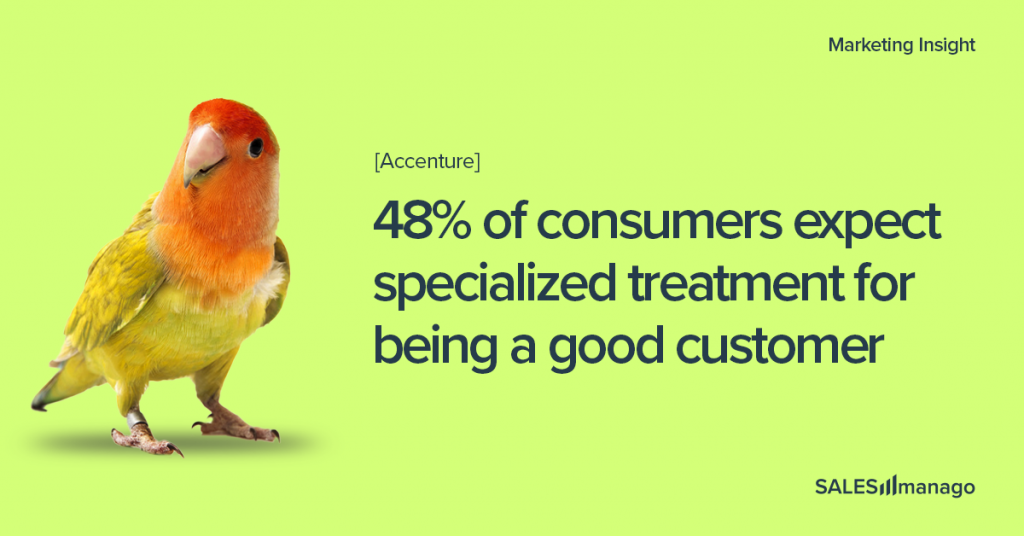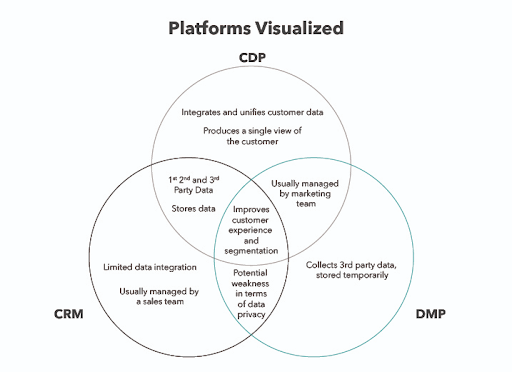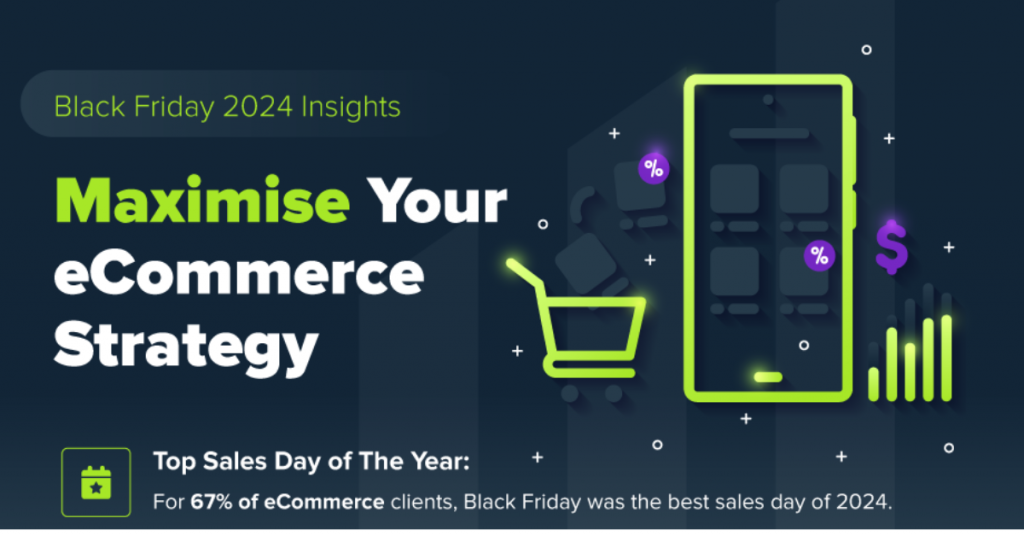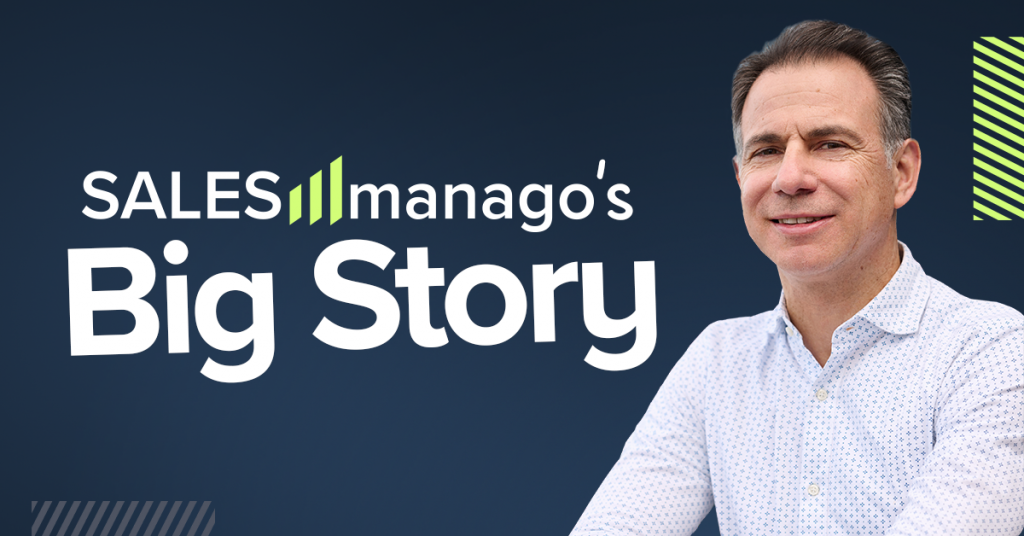
In this article we break down painpoints of CRMs and explain in detail how CDP solves them all, streamlining marketing efforts and paving the road to Customer Intimacy.
Many eCommerce companies still utilize some form of CRM software, in rare cases Data Management Platform (DMP). Having this in mind, we decided to compare the system you might be using with a Customer Data Platform (CPD), to highlight the distinct advantages of CDP.
CDPs did not emerge from nothing. From CRM to second generation CDPs, they are all more and more perfect iterations of the same idea – to understand customers better.
A brief history of customer data systems. From CRM to CDP
According to research 48 percent of consumers expect specialized treatment for being a good customer (Accenture) . A proactive attitude and extremely personalized service are required. In 2023 solving problems with template solutions does not account for a delightful customer experience anymore. Though companies work hard to address the customers’ expectations, it is not always easy to achieve. Marketers and customer service need very detailed customer data to personalize their offers and activities. Data scientists need to deliver useful data for the marketers and customer service lightning fast, so they can help out the customers here and now. This expectations grew over the years, and the software solutions with them.
Customer Relationship Management
In 1986, the first CRM debuted. Customer relationship management (CRM) refers to the principles, practices, and guidelines that an organization follows when interacting with its customers.
During the 1990s, CRM software became more prominent, as it allowed businesses to manage interactions with both customers and potential customers.
It is a technology for managing a company’s relationships and interactions with all of its customers and potential customers. It started with sales, then customer service and marketing came along. Finally commerce joined. Primarily however, CRM works with operational data of known customers.
- customer data, scoring and attributes
- opt-in preferences
- products/orders
Master Data Management
The next step in data management evolution came in the form of master data management (MDM). It provided a 360-degree of customers using structured (and later on) unstructured data. It provided no advantages to marketing teams, as it was designed only for IT.
Data Management Platforms
During the 2000s data management platforms (DMP) started. A direct predecessor to CDP platforms, that was “almost it”, DMP gathers and organizes second and third-party data and shares it with other marketing technology systems to gain deeper insights into customers. It can also segment anonymous ID’s.
- customer recognition
- audience segmentation, activation and orchestration
- look alike modeling and third-party data
Customer Data Platforms
All of them had a similar problem, they stored data in silos and did not exchange it, so building a single consumer view, useful for marketers, was next to impossible. The introduction of the first-generation Customer Data Platforms (CDP) – a term coined in 2013 – promised to solve this problem and become a single source of truth useful not only for marketers but across all the company.
Like we explained in a What Is A Customer Data Platform? CDP In A Nutshell part 1 a Customer Data Platform is packaged software that creates a persistent, unified customer database that is accessible to other systems.
“Packaged software” means that CDP is ready-to-use, off-the-shelf software, provided usually by the vendor.
The part about “persistent, unified customer database” means that CDP collects the data from many different sources, basically, all the company’s touchpoints, where acquiring first-party consumer data is possible, like sales, loyalty, customer service, social media, etc. Data from different sources is stored in CDP, then merged and unified into a single customer profile.
Finally, “accessible to other systems” means that customer data is shared with any other system that needs it, like those used by sales, marketing, commerce.
Customer Data Platforms:
- collect and unify all the company’s customer data
- enable effective customer data management
- enable data-based actions
What pain points, still present in legacy systems like CRM, were CDPs designed to solve?

CRM and other legacy MarTech systems’ painpoints
Dispersed data
Systems like DMP and CRM keep the data in their own silos. They are connected, they are able to mutually enrich or correct their datasets, but none of them puts them all together to create a unified, single source of truth about the customer.
From this problem another emerges. Traditional MarTech stack suffers from connection issues between different tools and technologies. The difference in implementation of these tools results in loss of data consistency across the stack.
Security and privacy issues
When there is inconsistency and connection issues, the often invaluable data gets inevitably lost. Traditional MarTech stack puts the companies at a major risk of either have their customer data stolen by the outside agent, or misused by i.eg. marketing team.
It is next to impossible to control and protect from the hackers all the data flowing back and forth between different systems and technologies, when each has its technological weak spots and it is hard to determine if a data loss, leak or change was an effect of connection problems, human error or outside intrusion. It is no less difficult to manage the customer marketing consents in this situation.
Identity resolution
Another problem, linked to data consistency and time to activation, is insufficient ability of the traditional MarTech stack to solve identity resolution. Without a single source of truth about the consumer for the company, marketers are forced to use third-party data in their efforts to unify the customer profile. Third-party data are, as for 2021, becoming a thing of the past. Not to mention, how much time and effort has to be put into, in the end, futile trying to achieve a unified customer profile.
Time to activation and time to market
Marketing teams and, actually all teams in a company, struggle to deliver the effect of their efforts to the market on time. They are forced to manage the data using too many systems and tools that capture different datasets.
Unfulfilled potential of the MarTech tools
All these problems combined diminish and repress the potential that each of the tools in the stack has. Fed with inconsistent data, transferred across differently implemented systems, the tools work slow and fail to produce really usable results. And delivering them in real-time is out of the question.
Benefits the CDP may provide your company with
Customer Data Platform provides the company with:
Single consumer view across all the divisions
Connects all the devices and collects all the data from all planned touchpoints like which consumer is looking for what, how much time do they spend on searching, what are the most frequently visited places.
Effective Segmentation
A single consumer view enables effective segmentation of the audience. AI then further helps to choose the right audience for the campaign.
Enriched consumer data
First-party data is enriched by zero-party data to build a comprehensive insight into a consumer.
Unparalleled customer experience
AI and machine learning are able to analyze multiple-source data with a speed impossible to achieve by data scientists. It also automates the delivery process across all the channels, ensuring a hyper-personalized, omnichannel customer experience.
This in turn results with:
Boosting customer loyalty
Customer Intelligence Platforms help the company in gathering data relevant for understanding the customer needs and activities. Understanding results in developing the experience that the customers will value. The satisfaction provided by the brand will increase their loyalty.
Increasing business agility
The Decision-making process and response time can be shortened thanks to real-time access to customer insights. A brand can respond quickly to changes in the internal and external environments without losing its vision and momentum.
Building Customer Intimacy
Understanding customers’ needs and values creates a deep and meaningful connection between them and a brand. It makes the interaction more personal, relevant, and consistent.
Streamlining marketing efforts
All the brand’s efforts to understand the customers and act with relevant reactions are more effective with Customer Intelligence Platform. It also minimizes the cost of all the actions.
Creating a competitive advantage
Much more differentiated customer experience provided by the Customer Intelligence Platform better suits the needs of the customers. The brand has the means to establish an edge over the competition.
Wrapping up
As for today, there is no marketing system better than Customer Data Platform, that would, at the same time:
- integrate and unify customer data
- produce a single view of the customer
- integrate Third, First, and Zero-Party Data
- store data
- be useful for marketing teams
- improve customer experience
It is also the only system that would allow to build true Customer Intimacy.
Is SALESmanago CDP? Well, yes, but it is also so much more. For the time of this article’s release, SALESmanago is even more than the second generation of CDP. It is called Customer Engagement Platform, a comprehensive system in which CDP is a vital, but not only part.
What exactly is a Customer Engagement Platform and why in 2023 it is a pinnacle of martech solutions? Read our last article!
 Follow
Follow
















